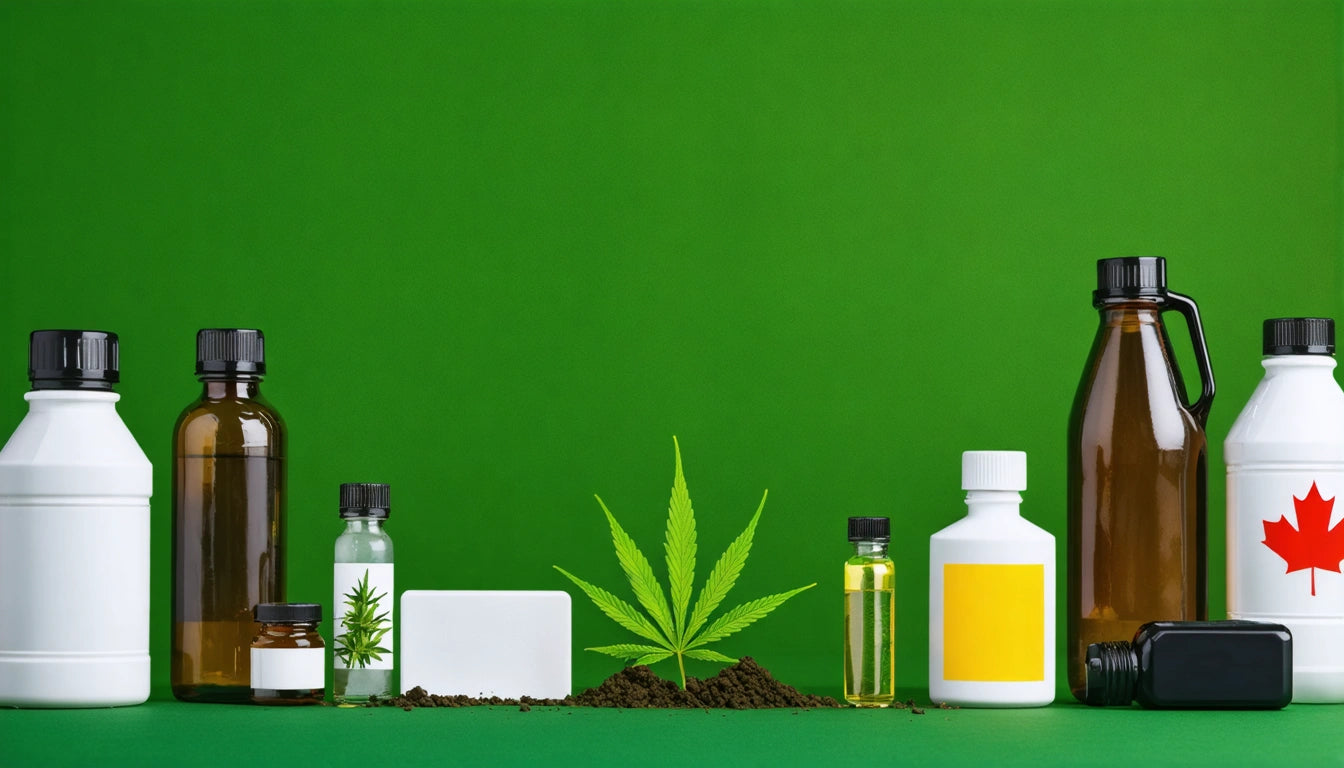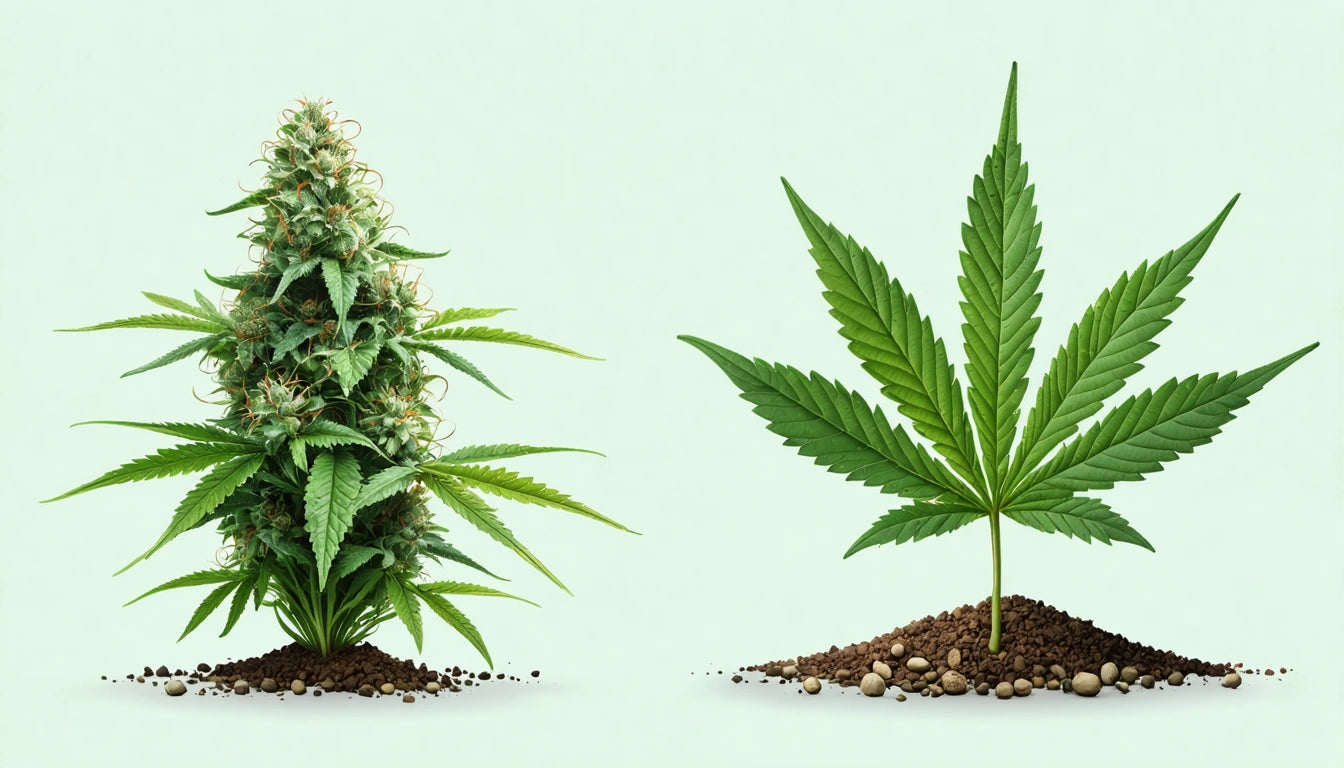Table of Contents
Cannabis edibles have become increasingly popular as a smoke-free consumption method, offering longer-lasting effects and precise dosing. The two primary cannabinoids found in these products, THC (tetrahydrocannabinol) and CBD (cannabidiol), deliver distinctly different experiences. Understanding these differences is crucial for consumers seeking specific effects, whether for recreational or medicinal purposes.
Key Differences Between THC and CBD in Edibles
THC and CBD interact with the body's endocannabinoid system in different ways, resulting in varied effects. The fundamental differences include:
- THC is psychoactive, producing the characteristic "high" associated with cannabis, while CBD is non-intoxicating
- THC binds directly with CB1 receptors in the brain, while CBD works indirectly with multiple receptor systems
- THC may increase anxiety in some users, whereas CBD often reduces anxiety
- CBD can counteract some of THC's psychoactive effects when used together
These differences explain why edibles and smoking produce different experiences, with edibles typically creating more potent and longer-lasting effects due to how THC is metabolized in the digestive system.
Effects and Benefits of THC Edibles
Recreational Effects
THC edibles produce euphoria, altered perception, and heightened sensory experiences. The onset is slower than smoking, typically taking 30-90 minutes to kick in, but effects can last 6-8 hours. This extended duration makes proper dosing crucial.
Medicinal Benefits
Therapeutically, THC edibles may help with:
- Pain management, particularly neuropathic pain
- Nausea and appetite stimulation (especially for cancer patients)
- Sleep disorders
- Muscle spasticity
To maintain potency in THC edibles, proper storage is essential. Storing edibles correctly preserves both flavor and cannabinoid content. For optimal preservation, many producers recommend using humidity control solutions to maintain the perfect environment for edible products, especially those with longer shelf lives.
Effects and Benefits of CBD Edibles
General Effects
CBD edibles don't produce intoxication but may create subtle effects including:
- Mild relaxation without cognitive impairment
- Reduced physical tension
- Clearer thinking and focus in some users
- A general sense of wellbeing
Therapeutic Applications
CBD edibles are frequently used for:
- Anxiety and stress reduction
- Anti-inflammatory effects
- Seizure management (FDA-approved for certain forms of epilepsy)
- Sleep improvement without the grogginess associated with THC
The effectiveness of CBD edibles depends partly on their formulation. Fat content plays a crucial role in absorption, as cannabinoids are fat-soluble and require lipids for optimal bioavailability.
Dosage Recommendations for THC and CBD
Proper dosing is essential for a positive experience with cannabis edibles. For THC:
- Beginners: 2-5mg THC
- Occasional users: 5-10mg THC
- Regular users: 10-25mg THC
- Experienced users: 25-50mg+ THC
For CBD:
- Mild effects: 10-25mg CBD
- Moderate effects: 25-50mg CBD
- Strong effects: 50-100mg+ CBD
First-time users should follow the principle of "start low, go slow" as outlined in this guide for safe dosing. Consuming too much THC can lead to uncomfortable experiences, but there are strategies to manage overconsumption if it occurs.
Reading Edible Labels: What to Look For
Understanding product labels is critical for making informed choices. Key information to look for includes:
- Total THC and CBD content in milligrams
- Serving size and servings per package
- THC:CBD ratio
- Full-spectrum vs. isolate formulation
- Additional cannabinoids (CBN, CBG, etc.)
- Terpene profiles (if available)
Learning to read edible labels helps consumers choose products that align with their desired effects and tolerance levels.
Choosing the Right Edible for Your Needs
When selecting between THC and CBD edibles, consider:
- Desired effects: psychoactive vs. non-intoxicating
- Timing: when and how long you want effects to last
- Experience level: beginners may prefer CBD or low-dose THC products
- Medical needs: specific conditions respond better to particular cannabinoid profiles
- Drug testing concerns: CBD products with less than 0.3% THC are less likely to trigger positive results
For those making homemade edibles, understanding decarboxylation and proper dosing techniques is essential for creating consistent products.
The stronger effects of edibles compared to smoking are well-documented and explained by THC metabolism in the digestive system. This knowledge helps consumers adjust their expectations and dosage accordingly.
Future of Cannabinoid Edibles: Personalized Products and Minor Cannabinoids
The cannabis edibles market is evolving toward more sophisticated formulations that combine specific ratios of THC, CBD, and emerging minor cannabinoids like CBN, CBG, and THCV. These custom blends target particular effects or medical conditions with greater precision. As research advances, expect to see more personalized products designed for specific outcomes, from enhanced creativity to better sleep or pain management, with clearer labeling and more predictable effects.











Leave a comment
All comments are moderated before being published.
This site is protected by hCaptcha and the hCaptcha Privacy Policy and Terms of Service apply.